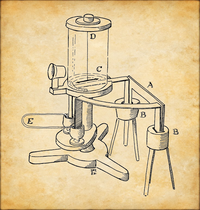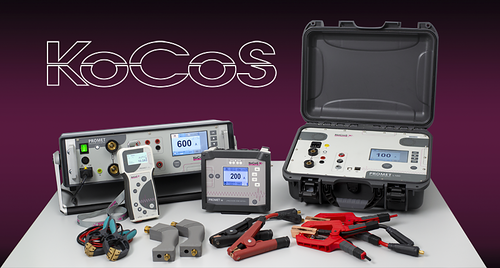Resistance Measurement
 -
26. May 2021
-
Resistance measurement
-
26. May 2021
-
Resistance measurement
Resistance measurement with PROMET - Thanks to Ohm!
After Alessandro Volta created a source that supplied electric current in 1801 with the so-called Volta Column, it was possible to explore the effects of electric current. Many researchers made numerous discoveries and observations, but the mysterious effects of electric current could not be revealed.
It was only through the discoveries and research of Georg Simon Ohm that the facts could be explored. Without his research and without the resulting fundamentals of Ohm's law, the outstanding developments in electrical engineering would not have been possible.
Georg Simon Ohm, born March 16, 1789 in Erlangen, died July 6, 1854 in Munich, was a German physicist.
The decisive measuring instrument for the discovery of Ohm's laws was the torsion balance galvanometer constructed by Ohm. The torsion balance galvanometer consists of a thermocouple (A) in which the ends are kept at different but uniform temperatures (B). A magnetic needle (C) on an adjustable suspension (D) and a device with which the various test conductors (E), i.e. the variable resistance, can be contacted.
If a test conductor is connected so that a current flows, the magnetic needle is deflected. The position is read off a scale. The deflection or the read scale values form a proportional measure for the magnetic effect of the electric current, thus the current intensity.
Ohm was able to deduce the law from these measurements:
I = Uq / (Ri + Rv)
Current = Source Voltage / (Internal Resistance + Variable Resistance)
Ohm published his results in 1826 and initially received little recognition. It was not until 1841 that Ohm received the Copley Medal of the Royal Society of London, which corresponds to today's Nobel Prize, as an award for his work. In 1893, the World Electrical Congress in Chicago gave the designation "Ohm" (sign Omega: Ω) to the unit of electrical resistance.
With Ohm's torsion balance galvanometer, only the first step in the development of resistance measuring instruments is described in this article. The history of resistance measurement shows the changes from the age of early experimenters to today's computer age, i.e. from measuring bridges to the first electronic devices to today's digital measuring systems. Developers always used the latest ideas and systems to make the products more useful and user-friendly. Technological change drove the development of measuring instruments and realized technological advances.
KoCoS is committed to this development and offers a diverse range of resistance measuring instruments with the PROMET series. PROMET precision resistance measuring devices are used to determine low-resistance in the μΩ and mΩ range. With adjustable test currents of up to 600 A in conjunction with a four-wire measuring method, the systems provide measurement results for the highest accuracy requirements. Typical applications are, for example, the determination of the contact resistance of switching devices and the resistance determination on inductive loads such as transformers. The use of state-of-the-art power electronics and the robust design guarantee maximum reliability for mobile use, but also for stationary use in the laboratory and factory.
Do you have questions or additions to the resistance measurement or to our measuring devices? Then contact us via the comment function here on the blog or by mail to info(at)kocos.com.



Comments are disabled for this post.
0 comments